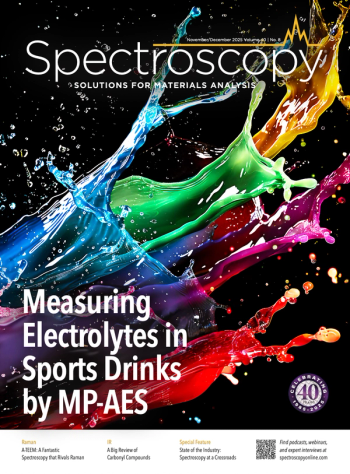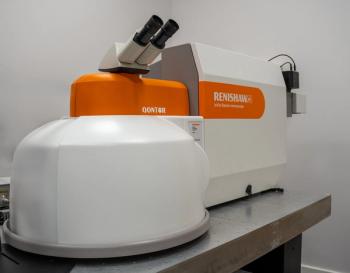Key Points:
Contrary to prior assumptions, aromatic molecules can strongly adsorb onto gold (Au) and silver (Ag) nanoparticles via dispersive π-metal interactions under ambient conditions, as shown using surface-enhanced Raman spectroscopy (SERS) and supported by DFT modeling.
This finding suggests that additional surface modifiers to promote aromatic adsorption may not be necessary, reshaping strategies for designing functional nanomaterials for applications in SERS sensors, molecular electronics, and catalysis.
Even thin oxide layers on silver nanoparticles can hinder these π-metal interactions, explaining why some aromatic molecules have historically been hard to detect on Ag surfaces—highlighting gold as a preferred material in certain cases.
A joint study between the School of Chemistry and Chemical Engineering at Queen’s University Belfast (Ireland) and the Department of Chemistry of Fudan University (Shanghai, China) revealed that aromatic molecules adsorb strongly onto Ag and Au nanoparticles via π-metal interactions under ambient conditions, using surface-enhanced Raman spectroscopy (SERS). This overturns the prior belief that such interactions are weak for IB metals like Ag and Au. Theoretical modeling confirms that these interactions are dispersive. The findings imply that many previous approaches to enhancing aromatic molecule adsorption on metal surfaces with surface modifiers may be unnecessary. Recognizing the importance of π-metal interactions will transform the design of functional materials and impact fields like molecular electronics, plasmonics, biosensors, and energy systems. Spectroscopy spoke to Steven Bell, corresponding author of the paper that resulted from this work (1), about their findings.
Bell will receive the 2025 Charles Mann Award, awarded for outstanding contributions to the chemical sciences in the area of analytical chemistry. The award will be presented at SciX 2025, taking place from October 5 to 10 at the Northern Kentucky Convention Center in Covington, Kentucky.
Can you explain what π-metal interactions are and why they are important for nanotechnology involving aromatic molecules?
There are many forces that drive adsorption of molecular targets onto the SERS-active substrates. Some of these, such the electrostatic attraction of oppositely charged ions or the formation of covalent bonds between the metal and thiols, are obvious. π-metal interactions are more difficult to visualize, but our DFT calculations show they are van der Waals forces which arise from the instantaneous dipole-dipole attractions between the π systems of the adsorbed aromatic molecules and the Au (111) surface. These are important because they mean that molecules with no obvious substituents to promote adsorption are still attracted to the surface.
What challenges have historically limited our understanding of π-metal interactions on Group IB metals like silver and gold under ambient conditions?
The main issue has been that most surface analysis techniques only work well in “clean”, typically high vacuum, environments. SERS gives the sensitivity we need when we are looking at sub-monolayer amounts of material, but it can be applied to solution phase studies at ambient temperature.
How does surface-enhanced Raman spectroscopy (SERS) enable the probing of molecular adsorption phenomena with high specificity?
One real advantage of SERS is that the spectra are characteristic of the molecule since every compound will vibrate in a different way and this give different spectrum. This means we can identify what compounds are present on the surface simply based on the spectra we observe. If there are several different species present then the observed signals will be a combination of the signals from each of the individual components added together.
In this study, how did surface oxidation affect the adsorption of aromatic molecules on Ag and Au nanoparticles, and why?
Previous studies had already shown that large polycyclic aromatic hydrocarbons (PAH) were difficult to detect with SERS using nanostructured Ag substrates. It was widely (but not universally) assumed that Au would be similar. In fact, we found that Au substrates give excellent results because the π-metal interactions promote adsorption and result in strong enhancement. Oxidation is important because if there is even a thin oxide layer on the Ag it interferes with this interaction and prevents detection of the PAH using SERS.
Why is it significant that dispersive π-metal interactions were observed under ambient conditions? What role do instantaneous dipole-dipole interactions play in this context?
The work on π-metal interactions is part of our long-term interest in understanding and highlighting the importance of surface interactions in surface-enhanced Raman spectroscopy. A lot of attention has been directed towards creating plasmonically-active substrates which give huge amplification of Raman scattering from target molecules that sit within the enhancing regions, the SERS hot spots. We are interested in the other half of the problem, which is getting the target molecules into the hot spots.
The study combines experimental SERS data with theoretical density functional theory (DFT) modeling. How does this multi-modal approach strengthen the conclusions?
DFT modelling, which was carried out by our collaborators in Fudan, was essential in providing quantitative data showing that the bonding energies between Au and the molecules we were studying (including naphthalene) were significant and in explaining the nature of the interaction.
The modelling also led us to investigate why we didn’t observe adsorption onto Ag since binding to clean Ag was also predicted by DFT to be favorable. This led us to carry out experimental work where we showed oxidation was important and we closed the circle by then carrying out calculations which showed an oxide layer would be expected to reduce adsorption. .
What does the co-adsorption of aromatic hydrocarbons with surface ligands imply about the surface chemistry of nanoparticles in real experimental environments?
The co-adsorption of other ligands shows that the surface is a complex environment. Most obviously, in mixed samples there will be competition for the surface sites. In the current study the calculations and experiments showed that this was not a simple competition because the charge which accumulated on the particles as chloride ions adsorbed meant that the adsorption of chloride was self-limiting. This left vacant sites where the naphthalene model compound could adsorb.
Why might previous studies have failed to observe these π-metal interactions, and how does this study address those gaps?
Normally, SERS substrates are chosen based on their plasmonic properties so Ag would often be used instead of Au and the observation that many compounds adsorb onto both Ag and Au substrates would mean that there would not normally be a strong reason to expect that using Ag to be a problem. This study highlights that it shouldn’t be assumed that Au and Ag are broadly similar.
What are the implications of these findings for the design of SERS-based sensors, especially for detecting weakly adsorbing aromatic compounds?
This work obviously opens that door for detecting important compounds which would have been regarded as problematic, such as PAH. However, it has wider implications since it can also play a role in studying more complex molecules where other structural features which can help to promote adsorption are also present.
How might the recognition of π-metal interactions under ambient conditions influence the future design of plasmonic nanomaterials and surface functionalization strategies?
Understanding the forces that drive surface localization will allow us to rationalize previous results and then take those lessons forward in designing more effective plasmonic sensors with tailored surface properties that exploit π-metal interactions.
Could you discuss how this understanding could be applied to fields like molecular electronics, biosensing, or catalysis?
In the first instance, we see this approach as allowing us to detect important targets with unprecedented sensitivity and specificity.We have had success with anti-cancer drugs, while other groups have already adopted our approach for different purposes, such as the detection of fentanyl. Beyond that, many applications of nanomaterials have at their core the interaction between a molecule and a metal substrate, so that a new method for easily creating functionalized surfaces that are stable under ambient conditions can provide a simple chemical route into novel functional materials which can be next generation catalysts or components of molecular electronic devices..
This study suggests that designing additional modifiers to promote aromatic adsorption may be unnecessary. How could this change current practices in nanomaterial engineering?
We would see this approach as complementing existing methods, helping us to work towards our goal of having a toolbox of generally applicable and experimentally straightforward surface functionalization techniques which will allow us to rationally design and construct functional nanomaterials.
If oxidation plays such a key role in suppressing π-metal interactions, what strategies would you propose to preserve or enhance these interactions during material synthesis or application?
It is very difficult to prevent the small amount of oxidation that causes problems with Ag substrates, so it is probably wiser to just use Au where the problem doesn’t arise.
Do you see potential for extending this research to non-aromatic systems or different types of metal nanoparticles? Why or why not?
The type of interaction discussed here quite general for a large range of aromatic compounds, but it won’t occur in the same way for non-aromatic targets. However, as mentioned at the start, we do have a lot of other ways we can promote adsorption such as covalent attachment or electrostatic attraction.
What are your thoughts on receiving the Theophilus Redwood Prize?
Of course, it is a great honor to receive the prize, but I really do feel I am accepting it on behalf of the many students, post-docs and academic collaborators who I have worked with over the years and have all made their own contributions to the body of work which is being recognized by the award.
References
1. Chunchun Li, C.; Zheng Chen, Z.; Yiming Huang, Y. et al. Uncovering Strong π-Metal Interactions on Ag and Au Nanosurfaces Under Ambient Conditions via in-situ Surface-Enhanced Raman Spectroscopy. Chem 2022, 8 (9), 2514-2528, DOI: 10.1016/j.chempr.2022.06.008




